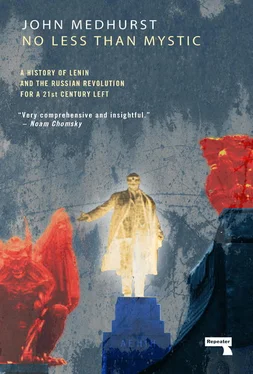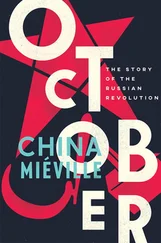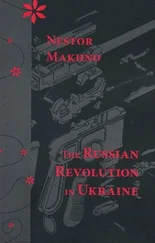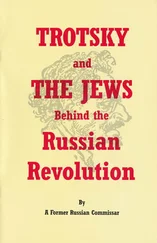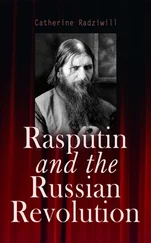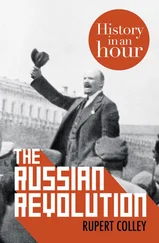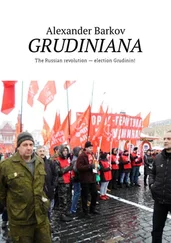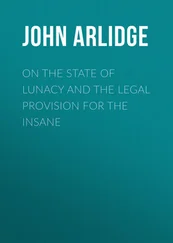Astonishingly, Koenker’s and Rosenberg’s Strikes and Revolution in Russia 1917 (1990) was the first systematic study of strikes and industrial actions in 1917 that not only linked them to the broader Revolution, but examined the social identities and perceptions of Russian workers outside of parties and Soviets. Koenker and Rosenberg concluded that rather than the leadership of the Vanguard Party, it was, in fact, factory-centred strike activism within the context of social and economic breakdown that led workers to assume a temporary “revolutionary” perspective. With the exception of a hardcore of party members, most Russian workers gave their support to the Bolsheviks in October 1917 for specific, provisional reasons, rather than because they suddenly realised, in a Pauline conversion, that they were soldiers of the Vanguard all along.
This Social History does not ignore the political dimension (led, as ever, by bourgeois intellectuals), but it balances it with the independent actions and wishes of the working class, in particular through re-emphasising the centrality of the Factory Committees to the revolutionary process. It finds that it was the Committees that had the most organic connection to working-class struggle, that best expressed workers’ desire for economic democracy and self-management. This approach has been attacked by both mainstream and Leninist historians, who while ostensibly opposed share some common assumptions. They both demonstrate disdain for the untutored Russian masses and admiration for Lenin, frequently respected by bourgeois-conservative historians for his “realism” and no-nonsense approach to leftist utopians. Some of the most iconic studies of Lenin have merged on this front. On the right, Adam Ulam’s sympathetic biography of Lenin (1965) exemplified this approach. On the left, Tony Cliff’s trilogy (1972-75) matched Ulam exactly in its dismissal of “left-wing infantilism” and anarcho-syndicalist industrial experiments.
What does this matter now? Leninist theorists such as Cliff and Mandel have passed away, and their work has not stood the test of time. Carr’s volumes are themselves a historical monument. Academic study of the period from 1917-24 is vastly more sophisticated than during their heyday, deepened and enriched by the school of Social History. But I am not primarily interested in the halls of academe. It is the broad, politically literate left public that I am concerned with. In this world, the “soft Leninist” tradition of Deutscher, Liebman, Lih, Murphy, Le Blanc, etc. still set the parameters of debate about the Russian Revolution, and after a period of decline seem to be doing so more than ever. They command broad intellectual respect and are widely reviewed and analysed (comparatively and retrospectively) in numerous left journals and blogs. They convey to the politically engaged–or those wishing to become so, but unsure of their moorings–an impression that the left is indulgent, even supportive, of Lenin and Bolshevism. In my view this needs to be countered to ensure that a democratic, libertarian, anti-Bolshevik tradition, with a much better claim to represent radical socialism, is not forgotten or ignored.
Many Marxists and socialists still expend time and effort on championing and defending the Bolshevik Revolution, on special pleading to exonerate its denial of civil liberties, repression of democratic opposition and recourse to state terror, and on attempting to uncover a libertarian diamond buried under the rough of Stalinism and Cold War demonology. But the historical record, stripped of ideological distortion and willful blindness, is clear. There never was a diamond.
In 1883, several members of the “Land and Freedom” populist revolutionary party who had recently become Marxists–the first to do so within the Russian revolutionary movement–reassessed the best route to the overthrow of autocracy in their homeland. Led by George Plekhanov, “the father of Russian Marxism”, they formed a small group called the Emancipation of Labour. This group rejected Russian “exceptionalism” (the theory that Russia, because of the unique communal nature of Russian village life, might skip the full development of capitalism and instead advance straight to socialism) and stated bluntly that a revolution in Russia could only take place if it was based on a fully developed industrial proletariat. The Emancipation of Labour group sought to lead the infant Russian working class from Switzerland. They had hardly any connection to the Russian labour movement and limited resources. Many of the group’s books and pamphlets were regarded by Russian state censors as so esoteric and boring that they allowed them to be officially published. Not for the first or last time the Russian authorities made a historic and suicidal mistake.
The Emancipation of Labour group was the seed of the Bolshevik Party, but it was itself the inheritor of a unique Russian revolutionary tradition. Given the nature of Russian society, this had of necessity been a tradition of revolution from above, and one could argue that the Bolshevik Party did not, ultimately, depart from this. The Romanov dynasty was established in 1613 as a result of a shifting of dynastic fortunes, with Mikhail Romanov offered the throne by the Zemsky Sobor, a feudal Estates parliament, after a “Time of Troubles” which saw the fall of the Rurik dynasty. Although the Zemsky Sobor was summoned annually for a while under Mikhail I, it was soon abandoned.
Since then, all attempts at radical reform, let alone revolution, had been instigated from the top, from the modernising programme of Peter the Great to the liberal aristocratic “Decembrists” of 1812. Only the unruly mass rebellions of Stenka Razin in 1671-72 and Yemelyan Pugachev in 1773-74 had deviated from that pattern, being movements of discontented peasants led by renegade Cossacks. Significantly, these rebellions, the only truly mass-based “revolutionary” initiatives before 1905, had fought for ethnic and peasant autonomy rather than political liberalisation.
The gravitational centre of Russian politics from 1613 to 1917 was Tsarist absolutism. The growing governmental and police apparatus (including the infamous Third Section of the Imperial Chancellery, a political police that was the precursor of the Okhrana, Cheka and KGB) existed to serve the Tsar alone and not, as in Western Europe, a growing professional middle class. This top-heavy bureaucracy was directed by an aristocratic, landowning elite. Underneath it rested a massive, mostly illiterate peasantry that up until 1861 were literally serfs. There was no breeding ground for a Russian variant of John Stuart Mill’s philosophical radicalism or Gladstone’s political and economic liberalism.
The most likely candidate for the role of Mill and/ or Gladstone in 19th-century Russia, Alexander Herzen, set the template for the Russian political exile and for the “intelligentsia”, a nebulous social category that had no real equivalent in Western Europe. The intelligentsia did not correspond to either the aristocracy (which with some notable exceptions supported the Tsar) or the bourgeoisie (which was miniscule before the second half of the century), but was a particular coalescence of critical intellectuals whose signature was its “impulse to criticise and oppose the fundamental iniquities and occasional barbarities of Tsarism”. 1Although its members came invariably from the bourgeois professions–writers, artists, doctors, teachers and lawyers–by no means all (or even a majority) of these professions were part of the intelligentsia. Yet those within its ambit would instinctively know where they stood in relation to each other and to the power structures of autocracy. Priests, Cossacks and policemen despised them, and were despised back.
Читать дальше
